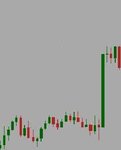😀
Let's put it another way. If the market had gone pear shaped and fallen another 50 points, instead of reversing, would you be telling me that the skill was in being short at that time? Of course you would! Oiga, I've been over all this from all sorts of angles and I know where the skill is. It's in risk/reward ie. not being in the trade when it is going wrong. Price is random in the short term. You may not pick it randomly, I'm sure that a lot of us believe that we are clever when we get it right and it may have been given a lot of thought, especially to probablr direction, but that is my opinion.
Split, it seems you are making discretionary trading decisions built upon a foundation of a belief, that market prices (in the short term ) are random.
That's the mismatching principle I talk of.
I don't think anyone should ? make discretionary trading decisions if their foundation of belief is that market prices are random.
It's likely counter logical, counter productive, and counter to the traders best long term interest, as the trader here would be trying to rationalise irrational price behaviour, as defined by him. It just does not make sense.
It's hard enough to trade when the match principle is correct within a trader, but with a mismatch ?
How does/or can the trader expect to progress beyond
' being at the mercy of the random market verses his own discretionary decisions and emotions ' when trying to trade in them ?
The trader is stuck trading his own mismatching here , and not the market at all ? One part of the traders mismatching has to change. Once the mismatch is resolved within the trader , he will be correctly aligned with his own matching principle. He is free finally to trade the market .
On the term ' Short term . '
You mention short term, what do you mean by short term ? A whole intra day session, 10 minutes, an hour or 2 , few days ?
If you know what is short term ,able to define it, it may help in developing the a suitable mechanical method approach , which will lead to knowing what stops, exits will serve best in the term being traded. (short term traders maybe able to help shed light on successful stopping strategies. )
Although I reference , Split here, it's open to all of us.


